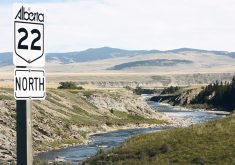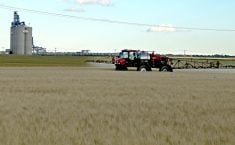Budget feed reserves
Sort cattle. Cull aggressively and make changes to feeding operations to avoid unnecessary waste.
Establish a grazing plan
Assess grazing resources and calculate needs. When calculating the carrying capacity of pastures, err on the side of caution to avoid long-term damage.
Look for other feed sources
Hay prices have been rising, but the cost of buying hay may be less expensive than grazing too early and too intensively.
“Remember that most pastures will be lower yielding and slower to start growth this spring,” said Grant Lastiwka, a grazing and forage specialist with Alberta Agriculture.
Read Also

New coal mine proposal met with old concerns
A smaller version of the previously rejected Grassy Mountain coal mine project in Crowsnest Pass is back on the table, and the Livingstone Landowners Group continues to voice concerns about the environmental risks.
“If you can’t flexibly manage to allow the pasture to recover from last year before once again starting grazing, look for pasture elsewhere.”
Supplement feed with cereal crops
Beef producers who have access to crop land should consider seeding a mixture of spring and winter cereals as an early grazing option. Within six weeks of seeding, a cereal crop mixture comprising high-biomass spring and winter varieties can provide an alternative to perennial grazing on grassland that has had inadequate recovery time. If the cereal crop is not needed for grazing, it can be used for silage, swath grazed or bale grazed.
Test soil and consider fertilization
Conduct soil tests in early April and consider fertilizing the most productive pasture or hay stands. Weigh the costs and benefits carefully, remembering that manure nutrients will also contribute to pasture health.
Manage pastures carefully
Graze responsibly and allow grass and forages time to recover.
“Adequate recovery time is the most effective practice when it comes to rejuvenating overgrazed or stressed forage stand,” Lastiwka said.
“It is important to see sufficient growth ahead of grazing. (To ensure) that plant health is not set back further, have at least a three-leaf plant growth stage before cows are allowed to graze on that pasture.”
Compare grass and forage species
If seeding pasture, consider soil type and growing conditions. Lastiwka recommended a good legume and a drought tolerant grass mixture. Plan to seed with no cover crop if seeding conditions are dry. If moisture is plentiful, seed with a cover crop but plan to silage early.

















